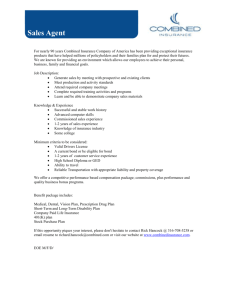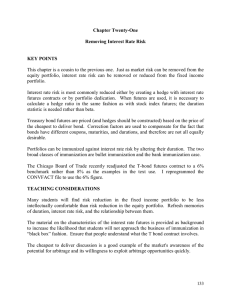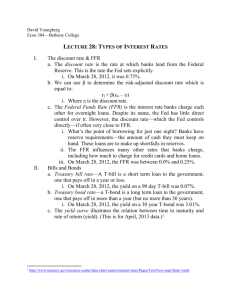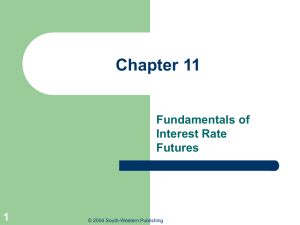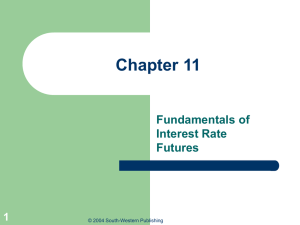ANSWERS TO QUESTIONS
advertisement
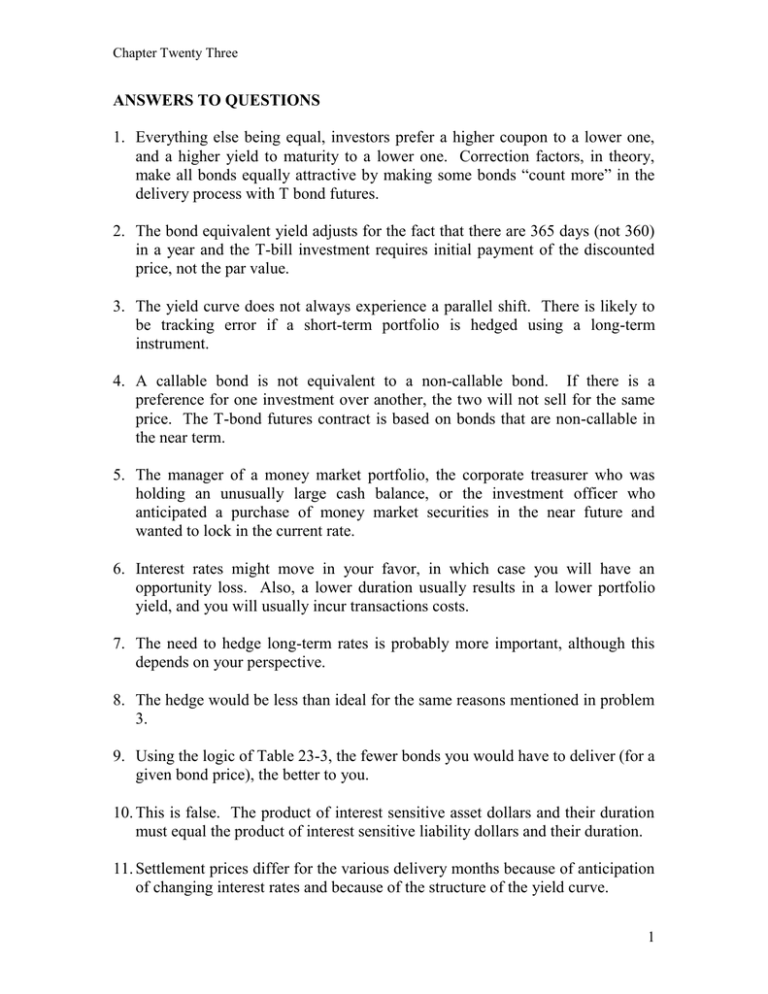
Chapter Twenty Three ANSWERS TO QUESTIONS 1. Everything else being equal, investors prefer a higher coupon to a lower one, and a higher yield to maturity to a lower one. Correction factors, in theory, make all bonds equally attractive by making some bonds “count more” in the delivery process with T bond futures. 2. The bond equivalent yield adjusts for the fact that there are 365 days (not 360) in a year and the T-bill investment requires initial payment of the discounted price, not the par value. 3. The yield curve does not always experience a parallel shift. There is likely to be tracking error if a short-term portfolio is hedged using a long-term instrument. 4. A callable bond is not equivalent to a non-callable bond. If there is a preference for one investment over another, the two will not sell for the same price. The T-bond futures contract is based on bonds that are non-callable in the near term. 5. The manager of a money market portfolio, the corporate treasurer who was holding an unusually large cash balance, or the investment officer who anticipated a purchase of money market securities in the near future and wanted to lock in the current rate. 6. Interest rates might move in your favor, in which case you will have an opportunity loss. Also, a lower duration usually results in a lower portfolio yield, and you will usually incur transactions costs. 7. The need to hedge long-term rates is probably more important, although this depends on your perspective. 8. The hedge would be less than ideal for the same reasons mentioned in problem 3. 9. Using the logic of Table 23-3, the fewer bonds you would have to deliver (for a given bond price), the better to you. 10. This is false. The product of interest sensitive asset dollars and their duration must equal the product of interest sensitive liability dollars and their duration. 11. Settlement prices differ for the various delivery months because of anticipation of changing interest rates and because of the structure of the yield curve. 1 Chapter Twenty Three ANSWERS TO PROBLEMS 1. Following the procedure on page 515 of the book, a price of 93.33 gives a discount of 6.67%. One fourth of this (for 90 days) is 1.6675%. The price you are promising to pay is then $1,000,000 $983,598.50 1.016675 2. A change of one basis point = $25. 6 basis points $25 x 4 contracts x $600 contract bp 3. Duration equals the maturity. 4. a. From equation 23-2, $10000 = $9800 - discount amount discount amount = $200 $200 $10,000 x 88 x ask discount 360 ask discount = .0818 = 8.18% b. Bond equivalent yield Discount amount 365 $200 365 x x 8.46% Discount price Days to maturity $9800 88 5. Using the Convfact file, the factor is 1.1019. 1.1019 x $100,000 x 0.92 = $101,374.80 6. Student response. 7. Using the Convfact file, the factor is 1.1926. 8. Using the Convfact file, the factor is 1.3555. 2 = Chapter Twenty Three 9. The conversion factor is 0.8410. Interest per six month period is 6.5% x 0.5 x $100,000 = $3,125.00. Halfway through the six-month period the accrued interest will be $1,562.50. The invoice price is then x x + 0.9200 $100,000 0.8410 $77,372.00 1,562.50 $78,934.50 futures settlement price contract size correction factor 10. Changing the bond for delivery has two effects on the invoice price: accrued interest changes and the conversion factor changes. The conversion factor would be 1.3467. The accrued interest increases to 9% x .5 x .5 x $100,000 = $2,250.00. The invoice price increases to $126,146.40. 11. Use equation 23-7 to determine the number of contracts: HR CFctd x Pb x D b Pf x D f # Contracts = CFctd x Pb x D b Portfolio value x Pf x D f $100,000 We do not have sufficient information to determine unambiguously the conversion factor for the cheapest to deliver bond, but we can do everything else: # Contracts = CFctd x 0.928 x 5.55 $2,737,460 x CFctd x 14.837 0.905 x 10.5 $100,000 12. Using the Convfact file, the factor is 1.4078. 13. Student response. You would buy T-bill futures to lock in the current interest rate. 14. Student response. You would buy T-bond futures. 3
